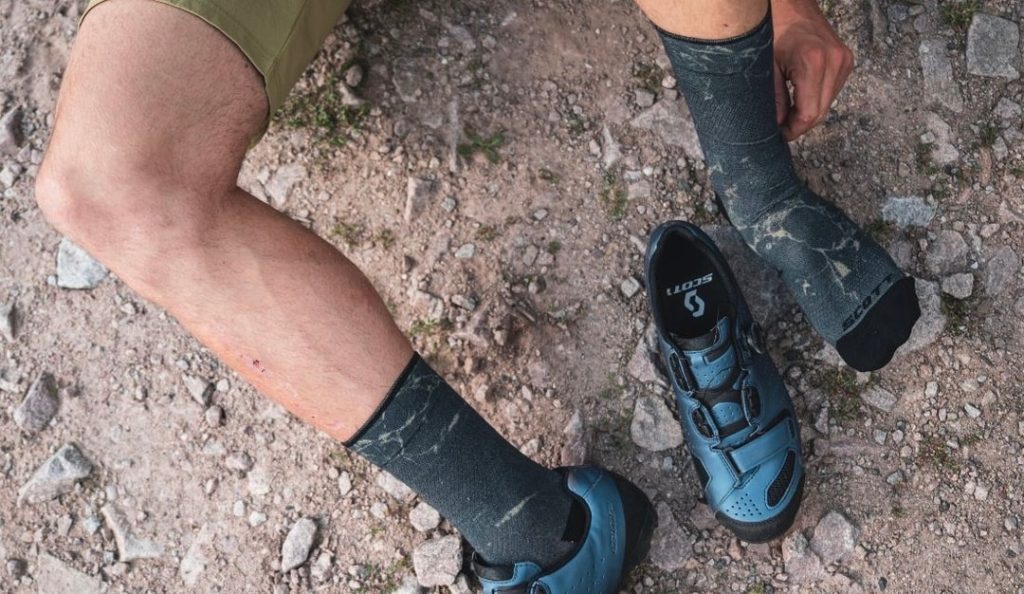
Mountain biking is an exciting way to explore the outdoors and get a great workout. A crucial component of the sport is having the right gear, and that includes proper footwear. Mountain bike shoes are designed specifically for the needs of the sport, but some riders wonder if they’re necessary. In this article, we’ll compare MTB shoes vs regular shoes and highlight the differences.
What are Mountain Bike Shoes?
Mountain bike shoes are a specialized type of footwear designed for the unique demands of riding off-road. They tend to be stiffer and more durable than regular shoes, with a tread pattern that provides excellent grip on rough terrain. The soles are made of materials like rubber, carbon fiber, or nylon, and often feature cleat attachments for use with clipless pedals.
Clipless pedals, despite their name, allow you to clip in and out of your bike’s pedals quickly and securely. They require a compatible shoe, which has a cleat that attaches to the pedal. This system provides more power transfer and control, allowing you to pedal efficiently and confidently, even over rough terrain.
Some mountain bike shoes also feature additional protection for the rider’s feet and ankles. Then this can include reinforced toe boxes, ankle collars, and heel cups, which help prevent injuries from rocks, roots, and other obstacles.
What are Regular Shoes?
Regular shoes, as the name suggests, are general-purpose footwear designed for everyday use. They come in a wide range of styles and materials and are intended for activities like walking, running, and casual wear. They may have a varying level of grip and support, but they’re not specialized for any specific activity.
Regular shoes typically have soft, flexible soles made of materials like rubber, foam, or gel. They’re designed for comfort and often feature cushioning and support for the feet. Some may have breathable uppers, which is nice for hot weather, but may not hold up as well in wet or muddy conditions.
MTB Shoes vs Regular Shoes: What’s the Difference?
Now that we understand what mountain bike shoes and regular shoes are, let’s compare them and highlight the differences.
Stiffness
One of the most significant differences between mountain bike shoes and regular shoes is the stiffness of the sole. MTB shoes have stiff soles made of materials like carbon fiber or nylon, which provide excellent power transfer and support. This stiffness is crucial for efficient pedaling and can help prevent foot fatigue on long rides. Regular shoes, on the other hand, are designed for flexibility and comfort. They have soft soles that are not well-suited for the pedaling motion of cycling.
Tread Pattern
Another key difference between mountain bike shoes and regular shoes is the tread pattern. MTB shoes have a more aggressive tread pattern designed for grip on rough terrain. The lugs on the sole are deeper and spaced further apart, making it easier to get traction in mud, rocks, and loose dirt. Regular shoes typically have a smoother tread pattern, which is better suited for pavement and other smooth surfaces.
Cleat Compatibility
Mountain bike shoes are designed to work with clipless pedals, which require a cleat attachment on the sole of the shoe. Regular shoes do not have this feature and cannot be used with clipless pedals. If you’re using flat pedals, regular shoes may be sufficient, but you won’t get the same level of power transfer and control as you would with clipless pedals and MTB shoes.
Protection
Mountain bike shoes often have additional protection features like reinforced toe boxes, ankle collars, and heel cups. Then these features are intended to protect riders’ feet and ankles from rocks, roots, and other obstacles on the trail. Regular shoes do not have these features and may not provide adequate protection for off-road riding.
Durability
Because mountain bike shoes are designed for the demands of off-road riding, they’re typically more durable than regular shoes. They’re made with sturdier materials and are built to withstand the wear and tear of rough terrain. Regular shoes may not hold up as well in these conditions and may need to be replaced more frequently.
Conclusion
Mountain bike shoes and regular shoes are designed for different purposes, and each has its own advantages and disadvantages. If you’re serious about mountain biking, investing in a pair of MTB shoes is a wise decision. They offer better power transfer, control, and protection than regular shoes, making them essential for off-road riding. However, if you’re just getting started or are a casual rider, regular shoes may be sufficient. Just be aware that they may not provide the same level of performance and protection as MTB shoes.

